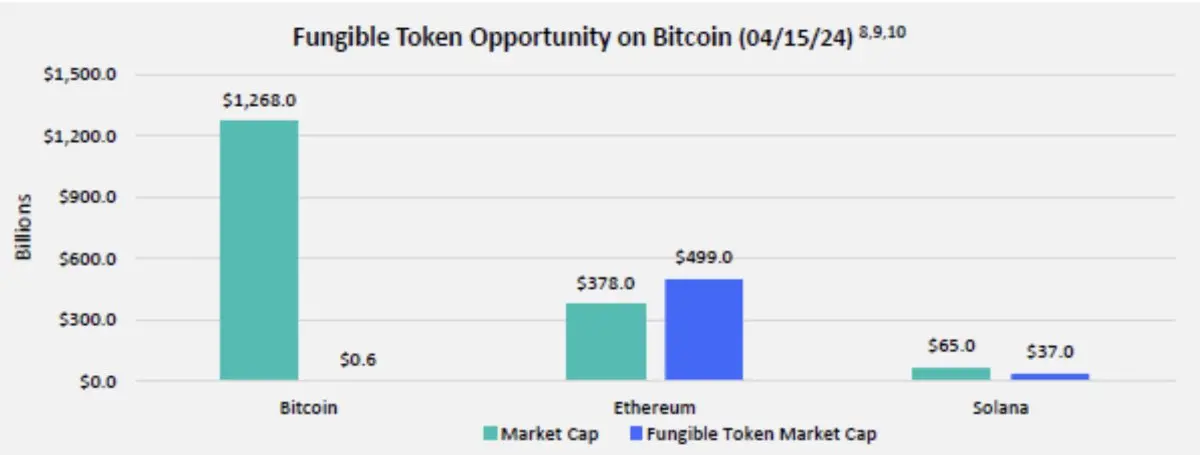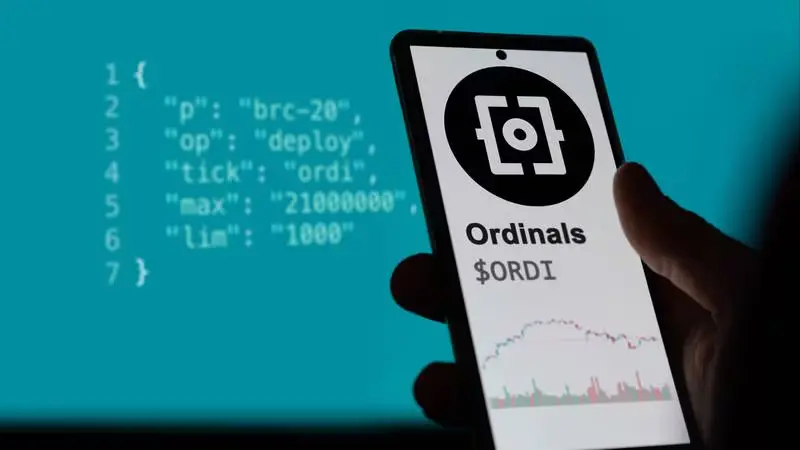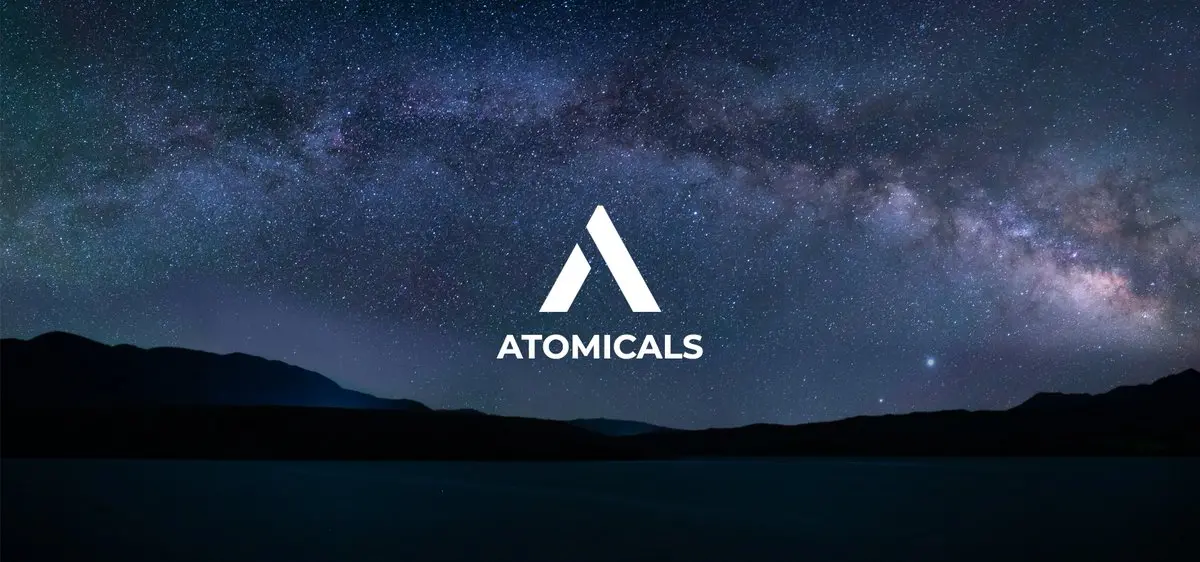 web3.0
web3.0
 Taking stock of the three countries killing the Bitcoin layer 1 protocol: BRC-20, Atomics, Runes
Taking stock of the three countries killing the Bitcoin layer 1 protocol: BRC-20, Atomics, Runes
Taking stock of the three countries killing the Bitcoin layer 1 protocol: BRC-20, Atomics, Runes
Original author: 0xSea.eth
At block height 840,000, Bitcoin will usher in the fourth halving, and the block reward will be reduced from 6.25 BTC Dropped to 3.125 BTC, this is a big deal for the entire crypto industry. Within the Bitcoin ecosystem, almost everyone is paying attention to the Runes protocol, which will be launched with the 840,000 block height.
How will the Runes protocol change the landscape of the Bitcoin layer protocol ecosystem? What will be the impact on BRC-20, Atomics, and other protocols? As an observer and player, on the eve of the halving and the launch of Runes, I would like to sort out some of my recent thoughts on the market.
Core Viewpoint
1/ The Bitcoin one-layer token protocol will form a tripartite situation of BRC-20, Atomics, and Runes;
2/ Runes will attract the attention of Western leeks. "Altcoin on Bitcoin" track will bring more users and liquidity to the entire Bitcoin ecosystem;
3/ The industry will move from "issuing new assets" to the next stage, and DeFi is the greatest common denominator;

▵ Franklin Templeton's internal report, We're still early!
Chapter I BRC-20
BRC-2023 20 once became synonymous with “Bitcoin Ecology”. From the perspective of Bitcoin, BRC-20 is a large-scale growth hacker of the Bitcoin ecosystem. With its simple participation method and huge wealth effect, it has attracted many people to own the first Bitcoin self-hosted wallet in their lives and purchase the second one. A sum of BTC is consumed as gas. Although the technical implementation of BRC-20 is not perfect and has even been criticized, it has defined the initial standard for "issuing altcoins on Bitcoin" (First is first) and has led two rounds of BRC-20 in the past 12 months. 20 craze, two top assets $ordi $sats were listed on the first-tier exchanges, and their market value exceeded US$1 billion for a long time.
BRC-20 is like a Minimum Available Product (MVP). It has also inspired many other protocols, including Runes, in terms of chip distribution and mechanism settings. Also due to the asset explosion and online gambling problems brought about by BRC-20, it has directly stimulated the industry's attention to Bitcoin expansion and L2 solutions.

After passing the first step of "asset issuance", the BRC-20 ecosystem needs to have richer applications and gameplay. At the end of March, BRC-20 underwent a major upgrade, allowing developers to deploy five-character tickers, supporting "self-issuance" and destruction by project parties, laying the seeds for DeFi. It can be seen that UniSat, as one of the most vocal players in the BRC-20 ecosystem, also has a more tacit and in-depth cooperation with the protocol author @domodata.
After two rounds of upsurge, BRC-20’s first-level players have calmed down a lot. And many people have discovered that a bunch of zeroed BRC-20s in their wallets can’t be sold at all, just like NFTs. In the past month, we have also seen that some BRC-20 projects are migrating asset mapping to Runes. It is foreseeable that after Runes is officially launched, BRC-20's first-level new players will be severely drained.
Based on these backgrounds, I think the focus of BRC-20 in the next stage will mainly be the implementation of the three-piece DeFi suite in the ecosystem: for example, when will Unisat’s own BRC-20 Swap be fully open and online; whether There will be reliable stablecoins emerging; lending projects that support Ordinals and BRC-20 asset pledges such as @ShellFinance_ will be online when they will be launched, etc.
BRC-20 has passed the 0-1 stage and needs to move to the next level.
Chapter II Atomics
Friends who have followed me for a long time know that I am a fan of @atomicalsxyz.
Now is a critical period for the Atomics protocol. On-chain liquidity is exhausted, and there is also a lot of FUD during this period. Fortunately, before Runes was launched, it had received support from OKX Web3 wallet/market and Binance Web3 wallet/market. It had a complete infrastructure and gained space for the development of the protocol. However, Binance’s original support was launched in February, but it was actually launched in early April. The situation has been completely different in two months.

Even at this trough, I still believe that Atomics should have a place in the Bitcoin ecosystem.
1/ ARC-20 is based on colored coins and UTXO, and is compatible with the Bitcoin native network to the greatest extent. It is a very useful exploration for DeFi on the BTC layer. This is the origin of its "atomicity" .
2/ Atomics stands out from the competition among many first-level protocols and has received infrastructure support from OKX and Binance’s head platforms. It is no longer a baby in its infancy.
3/ Recognition of the two core visions of the Atomicals protocol (Bitwork and AVM), and admiration for the founder.
4/ The price of $atom fell from a high of 16 to a low of 3.5. The 80% drop is a very good correction in the bull market, and there are still opportunities in the future.
About Atomics, the next focus will be on:
1/ AVM: The significance of AVM is to implement smart contracts directly on the Bitcoin layer, support deposit, stake and lend of ARC-20 tokens, and realize basic DeFi capabilities. Of course, after all, the Bitcoin L1 network has many limitations, and AVM also has limitations and challenges. But the implementation of AVM itself is a breakthrough from 0 to 1 in Bitcoin’s 15-year history. For more information about AVM, please see previous tweets.
2/ Split: Due to limitations of the Bitcoin network, on-chain splitting of $atom (cannot send less than 546 coins) has always been a problem. However, now that the split plan has been determined and has entered the testing phase, it will be launched together with AVM, which will allow atoms as protocol Beta tokens to have more liquidity and a larger holder group on the chain.
3/ Ecology: In addition to getting more liquidity on larger exchanges, another challenge for Atomics is how to attract more powerful project parties to join. There are more high-quality asset issuance and Circulation provides AVM with a diverse asset base.
Chapter III Runes
If compared with BRC-20, Runes is an improved and enhanced version.
Where are the improvements?
1/ Technology: Runes and Atomicals are based on the UTXO model, which avoids the burden on the BTC network like BRC-20, and also reduces the time and money costs for users to transfer assets.
2/ Mechanism: Based on BRC-20, a more flexible issuance mechanism has been added, such as project party reservation (Premine), limited time and unlimited quantity, etc.
Where is the enhancement?
1/ Marketing: Atomics has been intensively developed for 7 months from February to September last year, while Runes has been promoted for 7 months from the end of September last year to the present. Just like a dam has formed a small ecology after 7 months of water storage; when the dam opens and releases water, its potential energy will bring ecological nourishment to the downstream.
2/ Infrastructure: Due to the 7-month warm-up and the "legitimacy" of its origin, Runes received support from a large number of wallets and trading platforms in the ecosystem on the first day it was launched. For comparison, it has been 7 months since the Atomics protocol was launched in September, and it has gradually received support from major players such as Unisat, OKX Web3, and Binance Web3.
3/ Appealing power: @rodarmor’s appeal in the Ordinals ecosystem is too great. Runestone, RSIC and many NFT project parties who are capable of causing trouble have appeared, and together they have made the ecology hot.
I have been paying attention to the progress of Runes since Casey published his article in September last year, and I have made some preparations for it (such as full-node ord index) and I am worried about missing out. I have always believed that Atomics has more technological innovations and stronger technical consensus. As a fan and supporter of Atomics, the popularity of Runes has made me rethink the competition and differences between protocols. Although I think Runes' innovation is limited, it has indeed become the number one protocol in market consensus. Just like Ethereum is not the first public chain to support smart contracts, and even the technology may not be the best, but the prosperity of its developer ecosystem has made it the first public chain for smart contracts.
On the asset issuance side, there are three factions in the Runes ecosystem:
1/ Pre-runes, represented by RSIC and Runestone, both have a market value of more than 500M , it is difficult to have excess returns after price-in;
2/ 100% fair launch like BRC-20, no reservation by the project party;
3/ Part of the reservation by the project party, open to the public Part of it will be mint for the community;
There will be projects in these three factions. However, Runes has received unprecedented attention from the industry. The information gap in the past few weeks has almost disappeared. The rest depends on execution and gas volume. It is certain that the chain will be particularly large. It may be difficult to create a 10,000-fold myth like Ordi last year when no one cared about it, but there should still be many opportunities for tens to hundreds of times.
Regarding Runes, my next focus is:
1/ Everyone says that Ordinals NFT is dominated by Western players, while BRC-20 is dominated by Eastern forces and does not take over from each other. . As a new force inheriting the ecological resources of Ordinals, Runes will attract Western players to participate in playing "altcoins on BTC" and connect and integrate Chinese and Western players. With the influx of more users and liquidity, some attention will spill over to the BRC-20 and Atomics protocol ecology.
2/ Let’s make a bold assumption, will there be a certain Western group of people participating in more Runes tokens and taking the lead in listing it on Coinbase? Just like projects like Runestone, airdrop targets completely exclude BRC-20 addresses, details.
3/ In addition to asset issuance, are there any unrevealed innovations in Runes? Whether the Light Pools mentioned in Casey’s tweet can be implemented will push Runes from asset issuance to the DeFi stage.
— END —
From the low-key launch of BRC-20 on 2023/3/8, to the emergence of Atomics on 2023/9/21, to the brilliant release of Runes on 2024/4/20 , this is the 13 months since the Bitcoin ecosystem sprouted.
At this moment, we stand on the eve of the fourth step of halving, paying attention to the evolution of the BTC ecosystem from simple asset issuance to the next step such as DeFi, and witnessing the historical trend of Bitcoin in the fire of war.
As shown in the first picture above, the market value of the entire BTC ecological asset is only a few billion dollars, and the space is still very large. We're still early!
The above is the detailed content of Taking stock of the three countries killing the Bitcoin layer 1 protocol: BRC-20, Atomics, Runes. For more information, please follow other related articles on the PHP Chinese website!

Hot AI Tools

Undresser.AI Undress
AI-powered app for creating realistic nude photos

AI Clothes Remover
Online AI tool for removing clothes from photos.

Undress AI Tool
Undress images for free

Clothoff.io
AI clothes remover

AI Hentai Generator
Generate AI Hentai for free.

Hot Article

Hot Tools

Notepad++7.3.1
Easy-to-use and free code editor

SublimeText3 Chinese version
Chinese version, very easy to use

Zend Studio 13.0.1
Powerful PHP integrated development environment

Dreamweaver CS6
Visual web development tools

SublimeText3 Mac version
God-level code editing software (SublimeText3)

Hot Topics
 1378
1378
 52
52
 gate.io registration tutorial
Mar 31, 2025 pm 11:09 PM
gate.io registration tutorial
Mar 31, 2025 pm 11:09 PM
This article provides a detailed Gate.io registration tutorial, covering every step from accessing the official website to completing registration, including filling in registration information, verifying, reading user agreements, etc. The article also emphasizes security measures after successful registration, such as setting up secondary verification and completing real-name authentication, and gives tips from beginners to help users safely start their digital asset trading journey.
 What is Ouyi for? What is Ouyi
Apr 01, 2025 pm 03:18 PM
What is Ouyi for? What is Ouyi
Apr 01, 2025 pm 03:18 PM
OKX is a global digital asset trading platform. Its main functions include: 1. Buying and selling digital assets (spot trading), 2. Trading between digital assets, 3. Providing market conditions and data, 4. Providing diversified trading products (such as derivatives), 5. Providing asset value-added services, 6. Convenient asset management.
 gate.io latest registration tutorial for beginners
Mar 31, 2025 pm 11:12 PM
gate.io latest registration tutorial for beginners
Mar 31, 2025 pm 11:12 PM
This article provides newbies with detailed Gate.io registration tutorials, guiding them to gradually complete the registration process, including accessing the official website, filling in information, identity verification, etc., and emphasizes the security settings after registration. In addition, the article also mentioned other exchanges such as Binance, Ouyi and Sesame Open Door. It is recommended that novices choose the right platform according to their own needs, and remind readers that digital asset investment is risky and should invest rationally.
 The latest registration tutorial for gate.io web version
Mar 31, 2025 pm 11:15 PM
The latest registration tutorial for gate.io web version
Mar 31, 2025 pm 11:15 PM
This article provides a detailed Gate.io web version latest registration tutorial to help users easily get started with digital asset trading. The tutorial covers every step from accessing the official website to completing registration, and emphasizes security settings after registration. The article also briefly introduces other trading platforms such as Binance, Ouyi and Sesame Open Door. It is recommended that users choose the right platform according to their own needs and pay attention to investment risks.
 How to roll positions in digital currency? What are the digital currency rolling platforms?
Mar 31, 2025 pm 07:36 PM
How to roll positions in digital currency? What are the digital currency rolling platforms?
Mar 31, 2025 pm 07:36 PM
Digital currency rolling positions is an investment strategy that uses lending to amplify trading leverage to increase returns. This article explains the digital currency rolling process in detail, including key steps such as selecting trading platforms that support rolling (such as Binance, OKEx, gate.io, Huobi, Bybit, etc.), opening a leverage account, setting a leverage multiple, borrowing funds for trading, and real-time monitoring of the market and adjusting positions or adding margin to avoid liquidation. However, rolling position trading is extremely risky, and investors need to operate with caution and formulate complete risk management strategies. To learn more about digital currency rolling tips, please continue reading.
 How to calculate the transaction fee of gate.io trading platform?
Mar 31, 2025 pm 09:15 PM
How to calculate the transaction fee of gate.io trading platform?
Mar 31, 2025 pm 09:15 PM
The handling fees of the Gate.io trading platform vary according to factors such as transaction type, transaction pair, and user VIP level. The default fee rate for spot trading is 0.15% (VIP0 level, Maker and Taker), but the VIP level will be adjusted based on the user's 30-day trading volume and GT position. The higher the level, the lower the fee rate will be. It supports GT platform coin deduction, and you can enjoy a minimum discount of 55% off. The default rate for contract transactions is Maker 0.02%, Taker 0.05% (VIP0 level), which is also affected by VIP level, and different contract types and leverages
 What are the recommended websites for virtual currency app software?
Mar 31, 2025 pm 09:06 PM
What are the recommended websites for virtual currency app software?
Mar 31, 2025 pm 09:06 PM
This article recommends ten well-known virtual currency-related APP recommendation websites, including Binance Academy, OKX Learn, CoinGecko, CryptoSlate, CoinDesk, Investopedia, CoinMarketCap, Huobi University, Coinbase Learn and CryptoCompare. These websites not only provide information such as virtual currency market data, price trend analysis, etc., but also provide rich learning resources, including basic blockchain knowledge, trading strategies, and tutorials and reviews of various trading platform APPs, helping users better understand and make use of them
 Top 10 popular web3 digital currency trading software download app
Mar 31, 2025 pm 08:00 PM
Top 10 popular web3 digital currency trading software download app
Mar 31, 2025 pm 08:00 PM
This article provides download methods for the top ten popular Web3 digital currency trading software APPs, including OKX, Binance, Gate.io, Coinbase, Huobi (now HTX), KuCoin, Kraken, Bitget, MEXC and Bybit. Users can search for download links by visiting the official websites of each platform, or search for platform names in mainstream application stores to download and install. The article introduces the download methods of each APP in detail, so that users can quickly and conveniently find the appropriate download method. Download the Web3 trading software you need now and start your digital currency investment journey!


